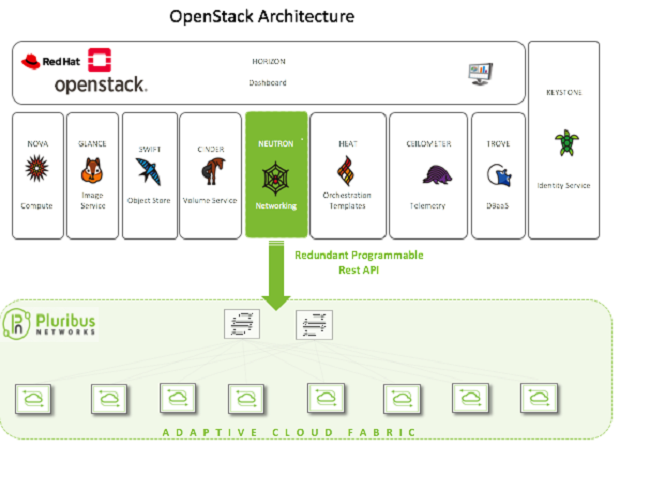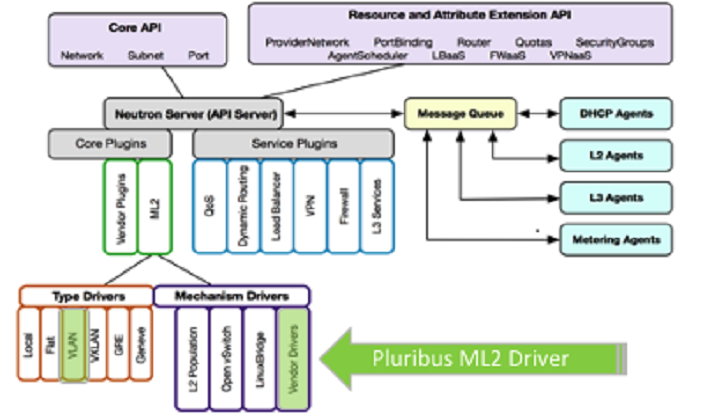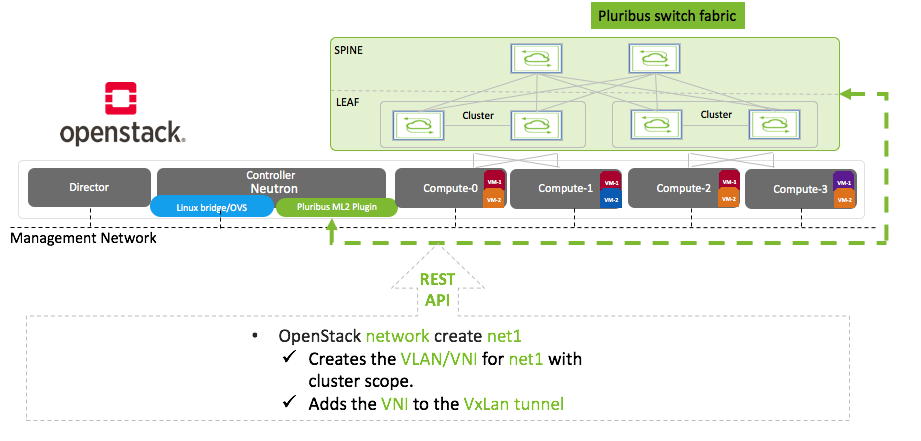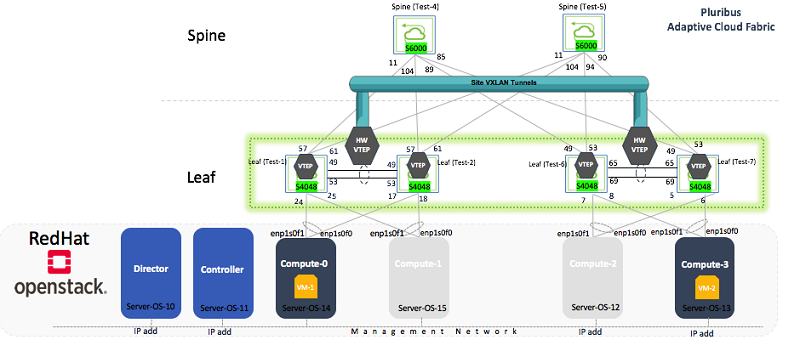Understanding the Pluribus Networks OpenStack Neutron ML2 Plugin
OpenStack is a cloud operating system that can be deployed in both public and private clouds and it controls large pools of compute, storage, and networking resources throughout a datacenter. These resources are managed and provisioned through a dashboard, CLI, or through APIs with common authentication mechanisms.
Pluribus uses the OpenStack plugin mechanism to create a Layer 2 network (VLAN), The Pluribus Modular Layer 2 (ML2) plugin, which provides powerful and simplified overlay automation services, allows customers to create a network by configuring the VLANs and switch ports on Pluribus' Adaptive Cloud Fabric over VXLAN tunnel or overlays. For details on Adaptive Cloud Fabric, see the Configuring and Administering the Pluribus Fabric chapter in the Configuration Guide for Netvisor ONE.
The integration of Pluribus ML2 Driver Plugin with the OpenStack Architecture is explained below with the help of the topology diagrams. The networking (Neutron) component of OpenStack architecture is integrated through redundant programmable REST APIs to the Pluribus' Adaptive Cloud Fabric (refer Figure 1).

Figure 1: Adaptive Cloud Fabric - OpenStack Integration
Further, the Pluribus ML2 driver plugin integrates with the Mechanism drivers running on the compute or network nodes of the OpenStack architecture and establishes communication between the Adaptive Cloud Fabric and the OpenStack Architecture (refer Figure 2).

Figure 2: Pluribus ML2 Driver Plugin Integration with Neutron (Networking) Server
As shown in Figures 3, the ML2 plugin uses the Pluribus REST APIs to configure the Pluribus switches. That is, the Pluribus ML2 plugin running on the controller node interfaces with the REST APIs to configure the Pluribus switches in the fabric. For this deployment to work, you must configure a username/password in the ML2 config file on the OpenStack controller (triple 0, aka O-O-O, which is OpenStack-on-OpenStack). These authentication credentials apply to all the switches on the fabric (that is, this is not on per tenant basis) and the credentials (password) is stored in an encrypted base64 format on the ML2 plugin.

Figure 3: Integration of Adaptive Cloud Fabric with OpenStack Components using Pluribus ML2 Plugin
The Pluribus ML2 plugin, which provides powerful and simplified overlay automation services, enables seamless connectivity for east-west traffic between virtual machines (VMs) running on compute nodes that are connected to the adaptive cloud fabric. The VLANs used by the VMs are configured across each cluster and the VLANs are stitched across the fabric using VXLAN tunnels (VXLAN overlays) by the ML2 plugin (refer Figure 4).

Figure 4: VXLAN Tunnel in Adaptive Cloud Fabric with OpeComponents
